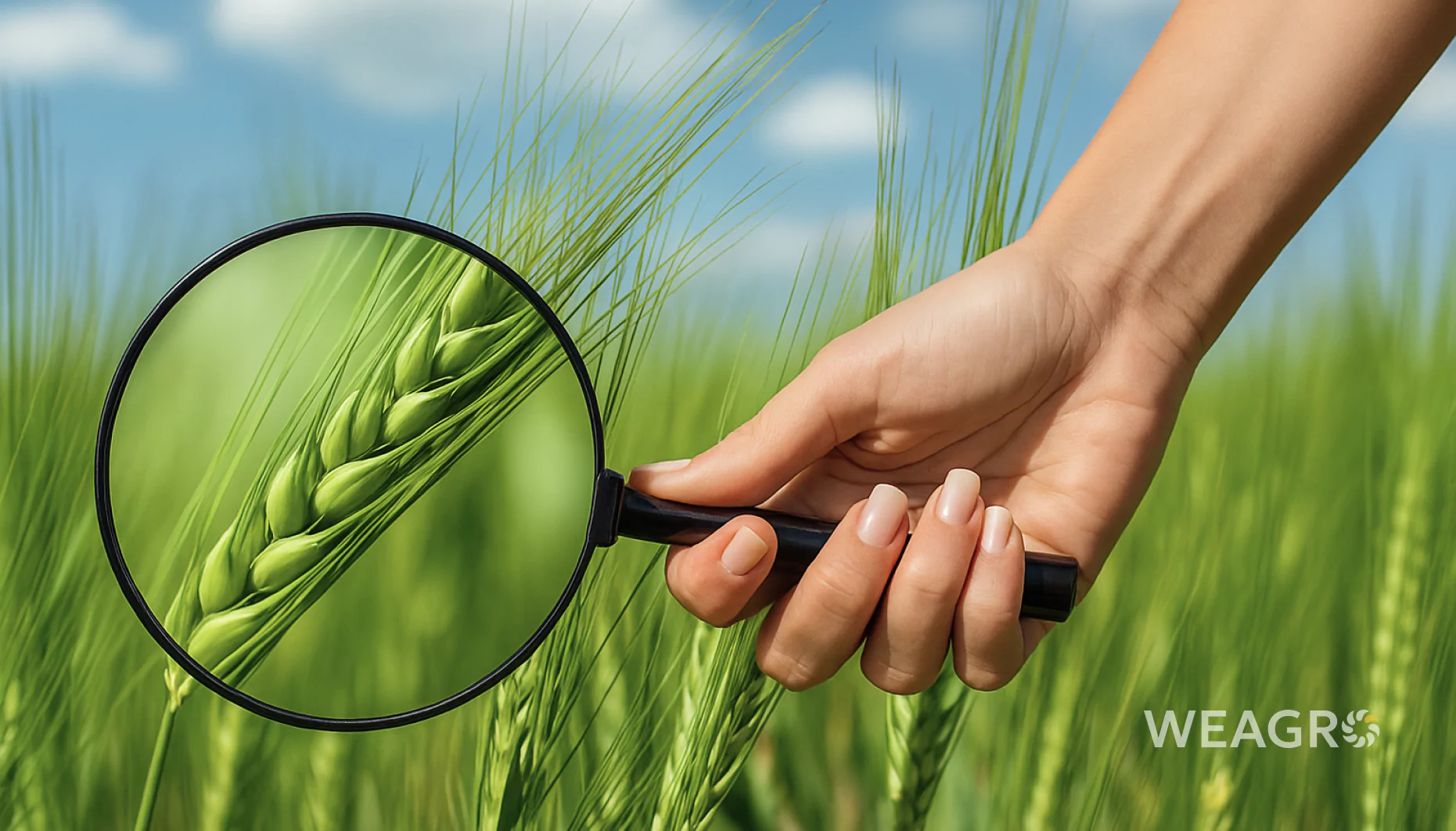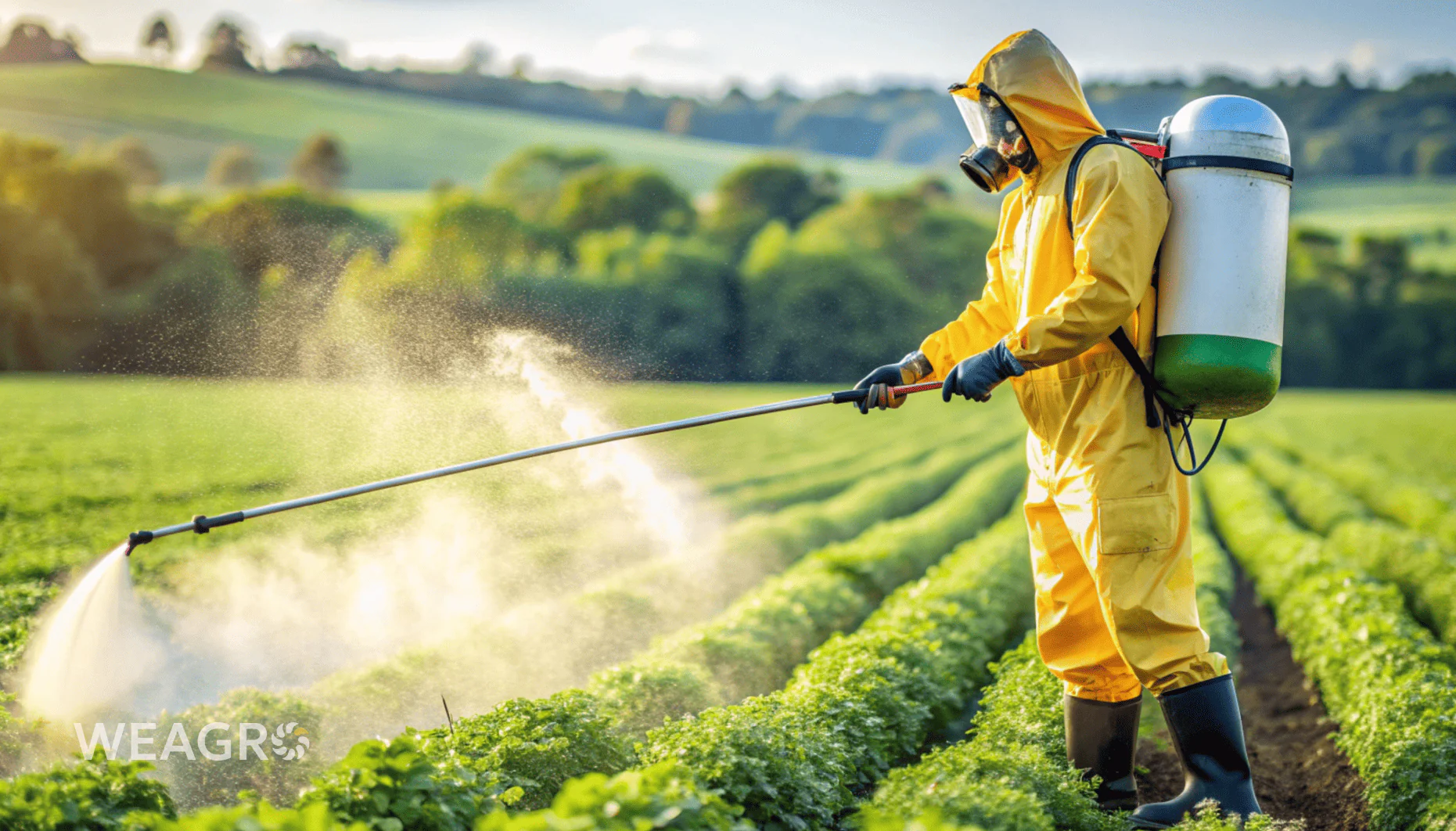Biological preparations have significant advantages compared to chemical ones, including:
- high safety for humans, animals, birds, entomophages and pollinating insects;
- environmental protection,
- absence of phytotoxicity, mutagenic and oncogenic activity.
- high biological effectiveness;
- aftereffect, manifested in pest mortality in subsequent development phases and in subsequent generations, and selectivity of action;
- absence of insect resistance to microorganisms;
- short waiting period.
Scientists from many countries around the world are working on creating biological preparations.
Ukraine has been actively working on creating biological preparations since the beginning of independence.
A bright example and achievement of scientists and technologists from Ukrzoovetpromprostach company is the biological preparation with insecticidal action AKTOFIT (developed in the 1990s), which provides reliable biological protection against a range of garden, vegetable garden, flower bed, greenhouse pests, etc.
AKTOFIT, among all the advantages of biological preparations, has additional benefits:
- Possibility of application in hot summer conditions.
- Possibility of application shortly before harvest.
- Suitable for use in greenhouse conditions and for treating indoor flowers.
Aktofit is a product of the vital activity of specialized non-pathogenic soil actinomycetes – Streptomyces avermitilis.
Mechanism of action:
The complex of natural neurotoxins enters the insect organism through intestinal and contact pathways.
Damage to the pest nervous system has irreversible consequences that cause paralysis and pest death.
After 4-10 hours they stop damaging the plant and die within 2-3 days.
The protective effect lasts up to 15-20 days.
Compatibility with other preparations:
Biological preparation Aktofit EC is compatible with growth stimulators, fungicides, adjuvants (usually there is no need for additional use of adjuvants, as appropriate components are already included in the preparation composition) and other plant protection products.
Storage requirements:
Store in dry, clean, ventilated premises, protected from precipitation and light, at temperatures from minus 20°C to +30°C.
First aid: if it gets on eye mucosa or skin, rinse with running water, seek medical attention. If the preparation enters the stomach, immediately give the victim several glasses of water with activated charcoal (10 tablets), then induce vomiting by irritating the back wall of the throat. Repeat the procedure several times. After providing first aid, the victim must be taken to the hospital. No antidote available.
Measures and means of transportation, application and disposal of preparation residues and container destruction: conduct according to the requirements of DSP 8.8.1.2.001-98 “Transportation, storage and application of pesticides in the national economy”,
In case of preparation spillage, collect it with an absorbent (sand, sawdust), remove contaminated soil layers, package in packaging that prevents spillage and transfer for further disposal.
It is prohibited to pour preparation residues into sewerage. Do not allow preparation residues, working solution or containers to enter water bodies.
Reuse of containers is prohibited.
After use, preparation containers must be transferred for disposal.
WHO classification, toxicity:
Class 3 hazard.
Packaging:
glass or polymer containers 40 ml, 100 ml, 400 ml, 900 ml, polymer canisters 4.8 l.
Guaranteed storage period:
4 years in manufacturer’s packaging.
Registration data:
Registration number
15781 series A 10098 until 31.12.2033
TU U 24.2-23524007-001:2005
Biological preparation with insecticidal action
AKTOFIT, EC
(aversectin C, 0.2%)
Purpose:
Colorado potato beetle, potato moth, mites, peach and melon aphids, tobacco and California thrips, whitefly, leafrollers and geometrids, meadow moth caterpillars, cabbage armyworm.

Application area:
For use in agriculture by spraying during vegetation period:
potatoes – 0.3 – 0.4 l/ha, twice;
greenhouse cucumbers – 2.0 l/ha, twice;
greenhouse roses – 2.0 l/ha, twice;
vineyards – 2.0 l/ha, three times;
hops – 23.0 l/ha, three times.
Application of Aktofit on potatoes:
Potato is one of the main agricultural crops. Potato has great importance in world agriculture, especially in Europe, due to its diverse use. It is simultaneously a food, feed and industrial crop. Potatoes are grown in most countries of the world. The total world potato planting area exceeds 23 million hectares.
The main reasons for obtaining low potato yields are non-compliance with agricultural practices and large losses from harmful organisms, which amount to 30–40% and more, therefore the development of an effective, scientifically based crop protection system with modern cultivation technologies comes to the forefront.
In obtaining a guaranteed, quality, organic potato harvest, the most important factor is protecting it from the Colorado potato beetle.
Prolonged use of insecticides has led to a sharp decrease in their effectiveness due to the appearance of resistant populations in the pest.
Therefore, biological protection of potatoes from the Colorado potato beetle currently deserves special attention.
The Colorado potato beetle is one of the most dangerous pests of potatoes and other nightshade crops.
Protection of potatoes from pests such as the Colorado potato beetle must be regular and comprehensive — only this way can the harvest be preserved.
One of the main factors in comprehensive potato protection from the Colorado potato beetle is the use of biological preparations containing bacteria, fungi or products of their vital activity that have a detrimental effect on the pest but are safe for humans, animals and beneficial insects. Biological preparations act somewhat slower than chemical pesticides, but they do not accumulate in tubers and soil and do not cause resistance in beetles.
Such a preparation is Aktofit, which effectively acts on the Colorado potato beetle (especially on larvae) causing nervous paralysis in them. The preparation begins to act within a few hours after treatment: pests stop feeding and die within 2–3 days. The biological preparation works through contact-intestinal action and shows best effectiveness in warm weather (+18…+25°C).
Application of Aktofit on hops:
Hops are grown in the same place for more than 15-20 years and are almost annually significantly damaged by various pests and diseases. Monoculture, absence of crop rotation, large amounts of organic and mineral fertilizers applied annually create conditions for the formation of a special agrocenosis of soil entomofauna. During the period of growth and development, hops are damaged by more than 86 species of insects, mites and nematodes and almost 20 species of diseases. Particularly dangerous for it are 10-12 species of pests and 4-5 species of diseases that occur annually. In systematic position, pests are distributed as follows: the most numerous group consists of Lepidoptera – 56.3% of all species, followed by Coleoptera – 8.4%, Hemiptera – 4.7%, Diptera – 4.7%, Orthoptera – 2.4%, Hymenoptera – 1.2%, mites – 1.2% and nematodes – 1.2%.
Their harmfulness is extremely high, as a rule they can reduce yields by 25-30%, and in some years by 40-50% and more, and also worsen the technological quality of production. Losses per hectare amount to 3.5-4.5 thousand UAH.
During vegetation, the above-ground parts of hops, young shoots, stems, leaves, lateral branches, flowers and cones are damaged by leaf-eating and sucking pests, among which the most harmful are spider mites, hop flea beetles, hop aphids, alfalfa weevils, leafhoppers, bugs, winter cutworms, potato cutworms, stem moths.
The basis of an ecologically safe hop protection system consists of crop cultivation technology elements, including proper area selection when establishing hop gardens and using varieties relatively resistant or tolerant to the complex of harmful organisms and application of biological preparations such as Aktofit.
Application of Aktofit on greenhouse cucumbers:
The main vegetable crop of protected cultivation is cucumber, which in the general structure of greenhouse farming occupies 60–70% of areas, as compared to other vegetables, it forms high yields (up to 200 t/ha).
It is known that in protected cultivation, due to increased temperature and humidity, favorable conditions are created not only for the growth and development of cultivated plants, but also for the spread of many harmful organisms capable of affecting or damaging plants throughout the entire vegetation period. Therefore, the most important element of protected cultivation vegetable technology is the control of harmful organisms, particularly phytophages.
Considering that the use of chemical protection methods in protected cultivation conditions is limited and allowed only when pests exceed EIL during their mass outbreaks, developing an effective biological cucumber protection system is a relevant task.
The species composition of harmful organisms, including phytophages, in protected cultivation conditions is significantly smaller compared to open field, but the use of greenhouses throughout the year, the regime of increased humidity and air temperature in them, the absence of natural regulating factors create favorable conditions for mass reproduction of phytophages and significantly increase their harmfulness.
To control pest numbers and limit their harmfulness in protected cultivation, modern integrated protection systems should be applied, which include organizational-economic, preventive, agrotechnical, biological, chemical, quarantine measures combined into a single complex.
The most common polyphagous phytophage of protected cultivation vegetable crops is the common spider mite (Tetranychus urtiace Koch.). The first symptom of plant damage is the appearance of individual light spots on the upper side of leaves, which subsequently become light-marbled, yellow, dry and fall off. Yield reduction can reach 35–40%, and in some cases – complete crop loss may occur.
In world greenhouse practice, the biological method of controlling common spider mite numbers is widespread, which consists of a series of measures combining the application of biological preparations, particularly Aktofit, ensuring the cultivation of environmentally clean production in protected cultivation conditions.
Use of Aktofit on roses:
Many people around the world call roses the “queen of flowers” because their timeless beauty and elegance distinguish them among the rest of the world’s flora.
Roses are one of the most popular plants in the world. The approximate age of cultivated roses is 5,000 years.
The appearance of insect pests on roses significantly affects the overall decorative properties of flowers, and in some cases can lead to complete plant death. Therefore, it is important to timely identify which pest threatens the plant and take all measures to combat the pest.
Various types of insects can live and develop on roses, such as aphids, thrips, spider mites, leafrollers, etc.
If even a small colony of pests is detected on roses, their treatment must be urgently started, particularly with the biological preparation Aktofit.
Use of Aktofit on grapes:
Obtaining high stable grape yields of good quality is based on a complex of organizational-economic, ecological, biological, chemical and agrotechnical means of limiting the spread and development of the most dangerous pests and disease pathogens.
About 700 species can develop on grapevines, however, several dozen pests have economic significance. The species composition of harmful organisms particularly depends on the grape growing zone.
Due to climate changes characterized as persistent thermal anomaly, the numbers have increased and the species composition of sucking pests has expanded, particularly mites, cicadas, thrips.
Currently, the key grape pests that cause the greatest damage to fruit-bearing plantations remain leafrollers. The most common on vineyards in Southern Ukraine are grape berry moth (Lobesia botrana Den. et Schiff), European grapevine moth (Eupoecilia ambiguella Hb.), grape leafroller (Sparganothis pilleriana Den. et Schiff). These pest species differ in morphological characteristics, biology and development features. The most widespread and harmful is the grape berry moth.
Biological preparations are one of the effective strategies for combating grape pests without using harmful chemicals. The use of Aktofit ensures healthy plant growth and development and contributes to obtaining high grape yields.









